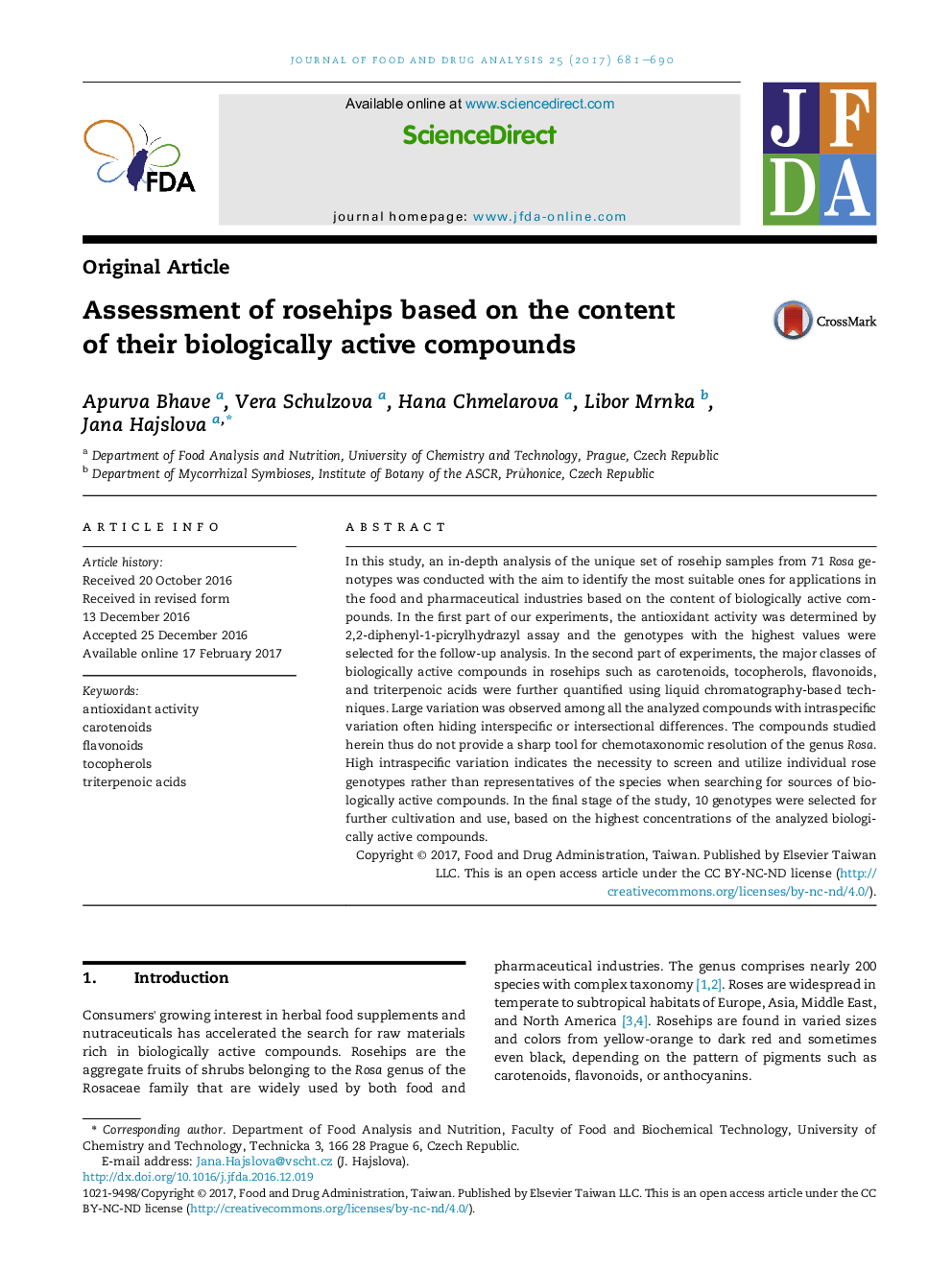| Article ID | Journal | Published Year | Pages | File Type |
|---|---|---|---|---|
| 5551051 | Journal of Food and Drug Analysis | 2017 | 10 Pages |
â¢Analysis of antioxidant activity of 71 rose genotypes.â¢Determination of health promoting biologically active compounds in rose hips.â¢In the end, selection of ten best rose genotypes for commercial food applications.
In this study, an in-depth analysis of the unique set of rosehip samples from 71 Rosa genotypes was conducted with the aim to identify the most suitable ones for applications in the food and pharmaceutical industries based on the content of biologically active compounds. In the first part of our experiments, the antioxidant activity was determined by 2,2-diphenyl-1-picrylhydrazyl assay and the genotypes with the highest values were selected for the follow-up analysis. In the second part of experiments, the major classes of biologically active compounds in rosehips such as carotenoids, tocopherols, flavonoids, and triterpenoic acids were further quantified using liquid chromatography-based techniques. Large variation was observed among all the analyzed compounds with intraspecific variation often hiding interspecific or intersectional differences. The compounds studied herein thus do not provide a sharp tool for chemotaxonomic resolution of the genus Rosa. High intraspecific variation indicates the necessity to screen and utilize individual rose genotypes rather than representatives of the species when searching for sources of biologically active compounds. In the final stage of the study, 10 genotypes were selected for further cultivation and use, based on the highest concentrations of the analyzed biologically active compounds.
Graphical abstractDownload high-res image (149KB)Download full-size image
